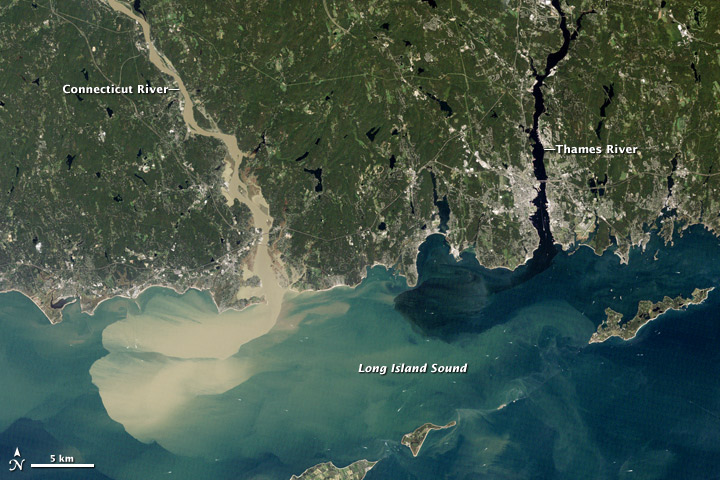Sediment in rivers and modes of sediment transport
Sediment can move along the bed, in low suspension, or high in the flow.
Learning Goals
- Know the major modes of sediment transport.
- Gain intuition into what these modes look like and how they interact (or don’t) with the bed.
- Connect your knowledge of fluid flow to understand why the Rouse Number describes the sediment-transport mode.
Definitions
- Bed load: Sediment that rolls, slides, or saltates (jumps/bounces) along or near the bed.
- Suspended load: Sediment that rides higher in the water column for some time; it may then may come back to rest on the bed, or may be carried high in the flow for a long time.
- Bed material load: The bed load and portion of the suspended load that falls back to the bed; literally, the transported load of all material that interacts and exchanges with the river bed.
- Wash load: Sediment that is carried easily by the water and does not interact with the bed. This is an extreme case of suspended load.
- Dissolved load: Dissolved material within the flow.
Sediment in rivers
Suspended and wash load delivery to the sea

The Connecticut River sends significant suspended sediment (suspended load + wash load) to Long Island Sound.
Sediment motion in a large flume
Enjoy this classic video from SAFL. Note that besides the gravel being discussed, suspended finer particles are whizzing by.
Fine gravel transport in a tiny tidal river
Sand and gravel transport in a rapid flow
Recall that shear stress is proportional to \(\frac{\mathrm{d}u}{\mathrm{d}z}\). Therefore, this high-velocity but shallow flow can exert significant shear stress on the bed and move sediment.
Sediment transport modes
Animated diagram
This animated diagram of modes of sediment transport, while brief, provides the key definitions.
Description of some modes of sediment transport
If you want a bit more than is supplied above, this description of sediment transport includes:
- Two methods of bed-load transport: rolling/sliding and saltation
- Suspended-load transport
- Dissolved-load transport It does not include wash load.
As always, when watching these UK-style physical geography videos, replace “energy” with “shear stress”.
What determines sediment-transport modes?
- Sediment falls back to the bed at a settling velocity, \(w_s\). This is a terminal velocity – that is, the velocity at which the forces pulling the particle downward are balanced by upwards drag, such that the particle stops accelerating.
- Sediment is concentrated near the bed, and this is mixed upwards into the flow at a rate given by turbulent mixing – \(\kappa u_\tau\). Recall from earlier that \(u_\tau\) is the shear velocity and \(\kappa\) is von Kármán’s constant.
Combining these provides the Rouse Number, \(P\), a dimensionless number providing the
\[P = \frac{w_s}{\kappa u_\tau}\]As the Rouse number becomes higher, the settling velocity wins, and the material turns into bed load. As the Rouse number becomes lower, the material becomes carried as suspended load.

This work is licensed under a Creative Commons Attribution-ShareAlike 4.0 International License.
